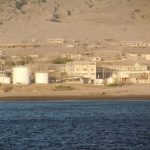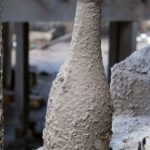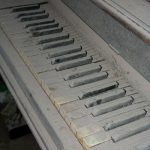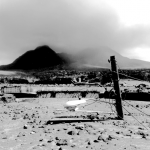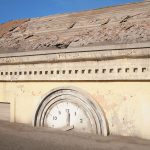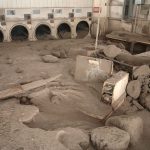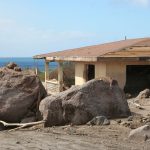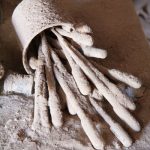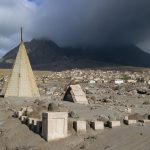Montserrat – Pompeii of the Caribbean


Abandoned Spaces From The Vintage News
In the West Indies, there is a tiny Caribbean island called Montserrat, nicknamed The Emerald Isle of the Caribbean, but also in the same poetic note “The Pompeii of the Caribbean .”
The British colonized the little island in the 17th Century and held on it since then, but little did they know, they were building their paradise on the fringes of a massive volcano waiting to awake.
In July 1995, Montserrat’s Soufrière Hills volcano, dormant for centuries, erupted and soon buried the island’s capital, Plymouth, in more than 12 metres (39 ft) of mud, destroyed its airport and docking facilities, and rendered the southern part of the island, now termed the exclusion zone, uninhabitable and not safe for travel. The southern part of the island was evacuated and visits are severely restricted. The exclusion zone also includes two sea areas adjacent to the land areas of most volcanic activity.
After the destruction of Plymouth and disruption of the economy, more than half of the population left the island, which also lacked housing. During the late 1990’s, additional eruptions occurred. On 25th of June 1997, a pyroclastic flow traveled down Mosquito Ghaut. This pyroclastic surge could not be restrained by the ghaut and spilled out of it, killing 19 people who were in the (officially evacuated) Streatham village area. Several others in the area suffered severe burns.
For a number of years in the early 2000’s, the volcano’s activity consisted mostly of infrequent ventings of ash into the uninhabited areas in the south. The ash falls occasionally extended into the northern and western parts of the island. In the most recent period of increased activity at the Soufrière Hills volcano, from November 2009 through February 2010, ash vented and there was a vulcanian explosion that sent pyroclastic flows down several sides of the mountain. Travel into parts of the exclusion zone is occasionally allowed, only by a licence from the Royal Montserrat Police Force.
The northern part of Montserrat has barely been affected by volcanic activity, and remains lush and green. In February 2005, The Princess Royal officially opened what is now called theJohn A. Osborne Airport in the north. Since 2011, it handles several flights daily operated by Fly Montserrat Airways. Docking facilities are in place at Little Bay, where the new capital town is being constructed; the new government centre is at Brades, a short distance away.
Montserrat, like many isolated islands, is home to some exceptionally rare plant andanimal species. Work undertaken by the Montserrat National Trust in collaboration with the Royal Botanic Gardens, Kew has centred on the conservation of pribby (Rondeletia buxifolia) in the Centre Hills region. Until 2006, this species was known only from one book about the vegetation of Montserrat. In 2006, conservationists also rescued several plants of the endangered Montserrat orchid (Epidendrum montserratense) from dead trees on the island and installed them in the safety of the island’s botanic garden.
IMAGES:
A new town and port is being developed at Little Bay, which is on the northwest coast of the island. While this construction proceeds, the centre of government and businesses rests at Brades.
Pipettes coated in Ash, Montserrat Technical College, Plymouth.Source Photo Volcanica
Plymouth Catholic Church buried In Lahar Deposits, Montserrat: Source Photo Volcanica
Ash piled streetlamp high on the Streets of Plymouth (1999). Photo by Gary Mark Smith.Source
Clock of Plymouth Courthouse buried in ash and lahar deposits, March 2006. Source Photo Volcanica
Lahar Deposits In Dry Cleaners, Plymouth, Montserrat Source Photo Volcanica
Ash-coated bottle, Plymouth, Montserrat Source Photo Volcanica
Ash-Coated piano, Plymouth, Montserrat Source Photo Volcanica
Abandoned town of Plymouth, Montserrat.Source
For more on this story go to: https://www.thevintagenews.com/2016/05/30/montserrat-modern-day-pompeii-caribbean-2/

